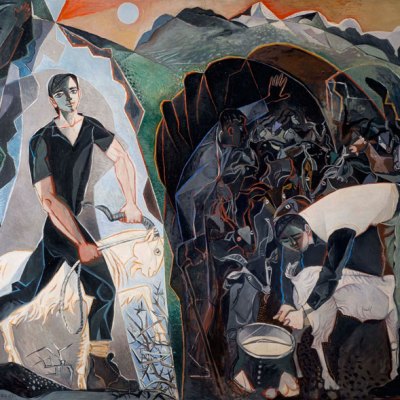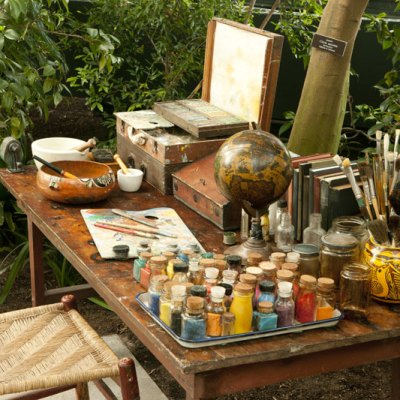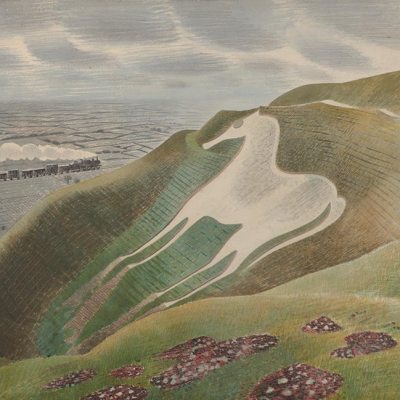At the opening of ‘Painting the Modern Garden’ in January, Charles Saumarez Smith, Secretary of the Royal Academy, winked. ‘People are being kind’. Why wouldn’t they? ‘People are suspicious when you put on a show with pretty pictures of gardens’.
I was reminded of a conversation I had with Charles shortly after I’d begun work at what would become the Garden Museum. I wondered why so few people visited Tate Britain’s ‘Art of the Garden’ show in 2004, although it was conceived – so went one explanation – because of a marketeer’s statistic that gardening is the most popular leisure activity in Britain. ‘When I was at the National Portrait Gallery’, replied Charles, ‘the only time I gave in to the marketing people was when they proposed an exhibition of portraits of sporting heroes. Nobody came’. A person can like gardens, and like art, but putting pictures of gardens on a gallery wall does not necessarily get that person on a train to London.
‘Painting the Modern Garden’, however, is a hit. It succeeds because of the astonishing beauty of the work on display, but also because it tells a true and moving story: how a circle of artists (first, Caillebotte and Monet, then Bonnard and Matisse) loved gardens, and saw in their flux and colour a challenge to the act of painting.
If you visit this exhibition, find time to pause first and think: why paint a garden? Early European paintings of gardens were symbolic in intent: the Virgin was often depicted in a walled garden. In the Renaissance and Baroque eras paintings were commissioned as records of princely plantings: an artistic bird’s eye view can show off a three-dimensional creation in a way that a plan, or a written text, cannot.
You paint a garden to capture time. On my windowsill a hyacinth has split open in a glass jar. No painting in the world can be as beautiful as that moment of rupture, no green pigment as green as that uncurling leaf. But once the hyacinth wilts, it is time to pour the dirty water down the kitchen sink. For the other 51 weeks of the year I would like a Winifred Nicholson still life of a hyacinth on a snowy sill, a work which is a bottling of light. And garden paintings are often emotive in impulse: at the end of the Second World War C. Eliot Hodgkin (one of the artist-gardeners in the East Anglian circle of John Nash, Eric Ravilious, and Cedric Morris) painted the wild flowers which flourished in the bombsites of blitzed London as a statement of hope.
So why did the circle of radical Parisian artists that dominate the RA show take up a theme that has been the exception, not the rule, in Western art? In the exhibition catalogue Clare Willsdon suggests that it was down to the mesmerising newness of plants such as the double dahlia (from Belgium – the dahlia itself is an immigrant from Mexico) and the chrysanthemum (from China). I’m not completely convinced. Since the Renaissance the story of gardens has also been the story of plant introductions. Zoffany might have painted the chimonanthus, which first took root in Britain at Croome Court, or Turner the wisteria that arrived in Britain in 1826.
Lady in the Garden (1867), Claude Monet. Image Courtesy of Merzbacher Kunststiftung
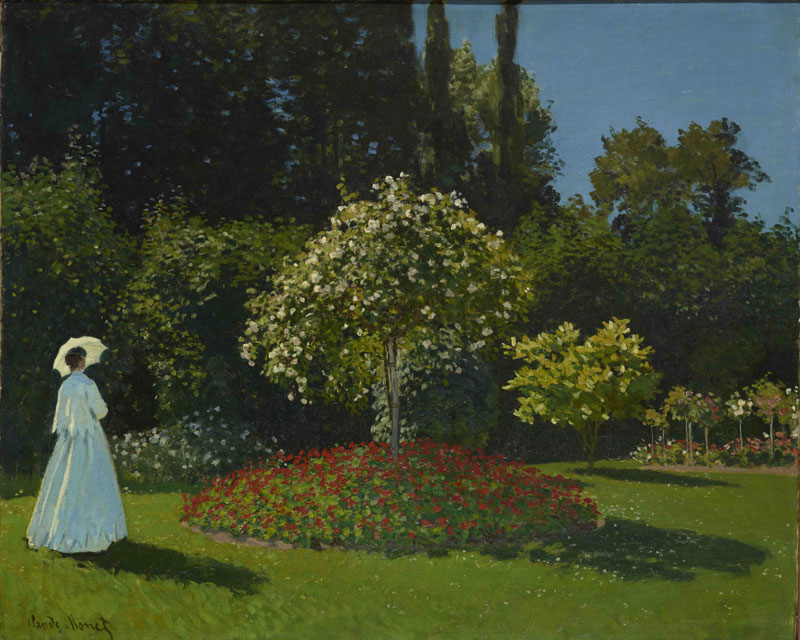
Willsdon also argues that to the Impressionists a garden was a form of retreat from the modern world. The most intriguing illustration of this is the watering can that Manet sketched into a letter furious at the ‘emptiness’ of the art chosen for the Salon. The watering can symbolises new life, and the truth of Nature. A garden is an Eden, and to paint a garden is not to paint a landscape, or a flower: it is to paint a personal space set apart from the world.
‘Painting the Modern Garden’ shows that Monet, Matisse and Bonnard (each of whom had a garden on the Seine) attached particular emotional significance to their gardens during the First World War. Matisse suffered nightmares from the laconic stories of trench warfare told by solders billeted on leave; his mother was behind enemy lines. ‘I paint to forget everything else’, he wrote to his wife. The climax of this exhibition is a group of Monet’s water lily canvases – three of the twelve he conceived as a war memorial in the form of a circular pavilion within a Parisian garden. The viewer was to be located in the centre as if floating in Monet’s rowing boat, and the doors curtained by mournful willow branches. Sadly, the Rotunda – which would have been one of the most affecting of all war memorials – was never built.
Too often, art historians do not stoop to enter the gardener’s inner world. However, Ann Dumas’s essay in the catalogue to this exhibition – in which we learn, among other things, that a gardener set sail in Monet’s rowing boat each morning to dust the lilies – is one of the finest interlinkings of art and garden history that I, at least, have read. Boldly, beside the masterpieces on the gallery walls are displayed Monet’s seed catalogues and gardening books, and, touchingly, his deferential application to the Commune to dig the lily pond. And who knew that Monet subscribed to Country Life?
Monet Painting in His Garden at Argenteuil (1873), Auguste Renoir © Wadsworth Atheneum Museum of Art, Hartford, CT
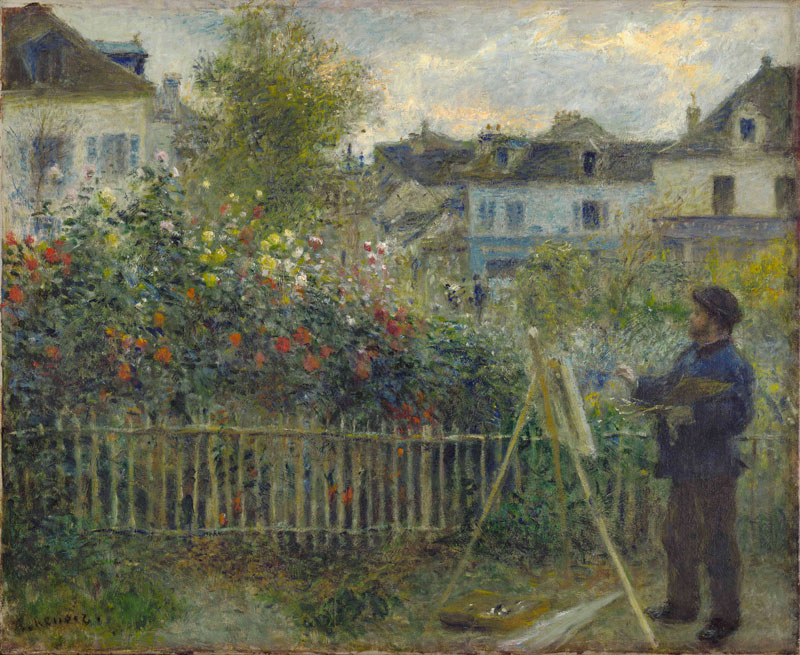
It is irritating, therefore, to see that the only loan from a British collection is William Nicholson’s still-life of horticulturalist Gertrude Jekyll’s gardening boots. Why not an image of Jekyll herself, or a representation of one of her gardens? She trained as an artist, studied the radical colour theory of the chemist Eugene Chevreul – as the Impressionists did – and was a woman of intellect and scholarship. And subtlety: those boots had belonged to a soldier, and to garden in a soldier’s old boots in 1919 is, surely, a form of memorial. If Monet had visited London during his gardening old age he would not have wished to puff cigars with moustachioed Academicians but, rather, to take the train to Godalming to visit Miss Jekyll’s garden.
This is one of the most astonishing exhibitions of our time – and in the final rooms, one of the most heartbreaking. Here we see Monet’s very late works of lumpy reds and thick yellows, painted from memory when he was more than half-blind. After his cataracts were operated upon, all boundaries dissolve into light. Debussy composed a piece inspired by this scene, and I would single-handedly carry a piano up the steps of Burlington House in order to hear the notes, as separate as the first drops of rain, played beside the works themselves. In these galleries you witness something very rare: a naked expression – by brush, pen, or musical score – of what the artist believes to be most valuable and elusive in the human spirit. It happens in Oscar Wilde’s De Profundis, the great self-examination of the heart wrung out on scraps of paper in jail; it happens in Beethoven’s late piano sonatas, it happens in Johnny Cash’s rasping last album, Ain’t no Grave, where the guitar notes are reduced to a handful and scattered like gravel. And it happened in Monet’s garden. In the end, art is art, but gardens are life.
‘Painting the Modern Garden: Monet to Matisse’ is at the Royal Academy of Arts, London, until 20 April.
